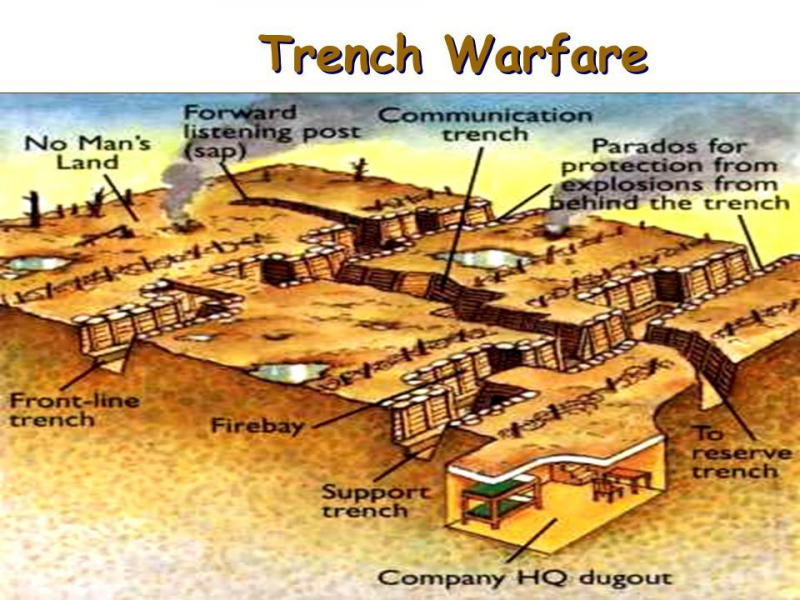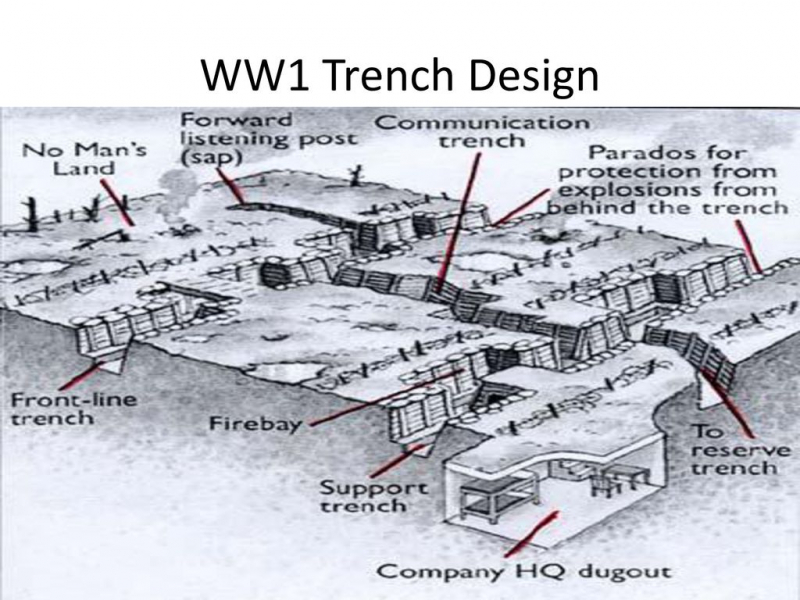They Normally Has Supporting Lines
To support the front line, the support trench, and the reserve trench, most trench systems had at least two additional trench lines. These lines were a few hundred meters apart and connected by connecting trenches, allowing supplies and soldiers to move freely. Dugouts built beneath the trench flooring were found in several trenches. Dugouts occasionally had additional amenities such as mattresses and furniture. The German dugouts were generally more modern, with toilets, electricity, ventilation, and even wallpaper in some cases.
The long-range artillery was stationed some kilometers behind the trench lines, while "no man's land" was the space between the opposing armies' front lines. The region of terrain between the two front lines known as "No Man's Land" was usually between 30 and 250 yards long. Rows of barbed wire, land mines, abandoned or wrecked military equipment, shell holes or artillery craters, dead troops, dead horses, fragments of soldier's uniforms, and what remained of trees and flora may all be found there. There were "Saps," which were listening posts dug out from the front line and into No Man's Land. On both sides of the trenches, compassion would occasionally intervene, and a truce would be called to collect the dead bodies.












